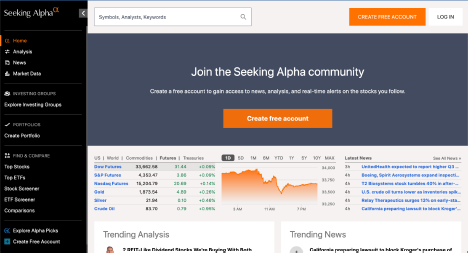You’re here for inspiration on how to put together the best membership website possible.
The top search results on Google are going to show you a bunch of different site designs and styles for how to arrange your page, inspiration for colors to use, etc.
But there’s a problem.
Nobody cares.
Nobody wants to join your membership because you have a beautiful site. That’s not the deciding factor here.
So, if you want your business to be counted among the best membership websites out there, you need to focus on something else entirely.
What Makes The Best Membership Websites… The Best?
The best membership sites have a lot of signups, keep people around for repeated billings, and bring in ample profit for the founder. Anything not meeting these three points is really second rate.
What you need to do if you are going to build the best membership website you can is ensure that you have some key elements in place and maximize the effectiveness of those elements the best you can.
What makes for the best membership website is not color choice, a great logo, custom font, or any other design element. You don’t need a celebrity endorsing your site (though, that would definitely help).
What you need is…
First and foremost is an offer that converts.
What is an offer?
Simply, a proposal you make to the prospect. You promise to give him or her some package of goods or services in exchange for some price. That’s your offer.
By converts, I just mean that prospects will take you up on your offer. They’ll buy.
Sounds obvious, but many people miss this critical step. They put together a flashy site, or focus on things like ads, before getting an offer together that they know will convert into sales.
Secondly, you need to deliver on that offer.
You need to fulfill what you promised to your new client. Don’t be one of those people who makes big promises and then fails to deliver. There are too many of those sites as there is.
Be honest and accurate in your marketing. Only offer what it’s possible for you to deliver on.
And then, when you do deliver, make sure the execution is great. Provide a high quality professional product or service so that people are satisfied that you delivered.
Your new clients need to get exactly what they were promised and have to receive quality.
Third, you need to engineer stickiness.
The first two elements of a great membership site are essential to have, but a great product does not necessarily keep people around.
Without a sticky product, many people will leave satisfied, provide testimonials, and maybe tell their friends about you… but they’ll still leave. No more payments.
Stickiness is the reason your clients have for staying as paying customers. It usually comes down to receiving ongoing benefits that are important for getting them to where they want to go in business – for achieving their goals.
Website software, for example, has this in spades. You want to run a web business? Cool. You’re going to need software to make your website. You can’t glue a drawing on the back of a napkin to your computer screen and expect others to visit it.
But once you get that site started using some company’s piece of website software, you’re stuck. You’re not going anywhere. You can’t. Moving your entire site off of, for example, WordPress is a CHORE. So, you stick it out even if you’re not entirely satisfied with how the software is working out.
Can you integrate yourself into the prospect’s business or end goals so that they won’t be able to achieve their goals without you? That’s true stickiness.
Notice that “a beautiful website” was not included among the top 3?
That’s because a great looking site is a nice-to-have rather than a critically important element to have.
Ugly websites make money. Yes, if your site looks better, is more professional, etc, then you’ll typically make a bit more money. But it’s not the deciding factor. People don’t sign up because you have a sexy website.
What is a Membership Website?
Before we move on to some examples of great membership websites, let’s get some terminology out of the way.
You’ve undoubtedly heard of membership websites unless you’ve been living under a rock somewhere.
A membership website is a website that hosts a membership community offered by a membership business.
A membership community is a group of people who are all interested in some niche topic, so get together and interact, discussing the topic. The membership element implies needing to pass through some hurdle to join. Typically, in our case, this is a monetary payment.
A membership business is a company that puts the whole thing on: making the membership website, taking payment, advertising it, and delivering on the offer made to prospects.
Simple enough?
4 Great Membership Websites Briefly Dissected
Internet Marketing Gold
Internet Marketing Gold is an SEO community that’s focused around courses and a famous SEO by the name of Kyle Roof. How does it stack up on our list of essential characteristics for building a great membership website?

An offer that converts: The team at IMG has definitely found that offer, with over 1,000 members and a 300% growth rate over their first three years.
Delivery: IMG keeps a consistent focus on providing a large number of high quality courses. It also provides ongoing advice and feedback from top level SEOs (nerd speak for “search marketing optimizers”). The product is great and you certainly get what you were promised.
Stickiness: IMG has had a tough time with stickiness, making their site a bit of a treadmill. They have to keep running just to stay in the same place due to churn.
Net Net Hunter
Net Net Hunter is a niche stock investing site that focuses on helping members put together a high quality net net stock portfolio quickly and easily. Members get lists of stocks that fit the strategy, a filtered shortlist of the best to research, and a great members’ forum.

An offer that converts: NNH does ok here, but not great. This is a function of the deep value investing niche more than anything, which is tiny and full of people who would walk a mile to save a dollar. The site is sitting at about 200 members, and this has held steady for years.
Delivery: Delivery is good, with a high quality members section, good standardized analyses, and a very well sorted list of net net stocks. Members new to net nets are often surprised at the depth of knowledge available on the forum and the experienced members ready to help.
Stickiness: NNH has done a good job engineering stickiness here, but there are challenges. Investing is like going to the gym – people like to start in January and quit by March. Still, the team has managed to structure the portfolio management strategy for those who do stick to the path long term so that those members stay for years.
Bigger Pockets
Bigger Pockets is a real estate investment community that discusses all things to do with the niche. They also provide web tools and learning resources to help get new real estate investors up to speed.

Offer that converts: With supposedly 2 million members, I would say that they have done pretty well crafting offers that convert. Actually, they have a number of different offers for different sorts of people, boosting conversion and helping to grow their membership base.
Delivery: The site is generally well regarded in the investment community, so I think they’ve done a good job here.
Stickiness: BP has done something that I don’t see a lot of other membership websites doing, and it’s a great retention strategy – offering software tools to members. If you require BP’s software to analyze deals, track costs, manage properties, or figure out various real estate-y things on an ongoing basis, you’ll probably stick around just to use the software. This is great.
Seeking Alpha
Seeking Alpha is a tremendous business in the stock investing space. Started by a Wall Street pro, they put together a community of investors who all contribute to the product by writing stock analysis and voicing critical discussion over stock recommendations. How does it stack up?

An offer that converts: SA is one of the largest sites in the investment space, so suffice it to say that they’re doing quite well.
Delivery: They also do well on delivery, though members have to be very careful whose stock recommendation they follow since just anybody can write an analysis, and those analyses are not vetted. There is a large number of them, though.
Stickiness: Lazy investors who love to have access to a lot of different opinions on various stocks tend to stick to SA for quite a while. It also provides some data that you tend not to find anywhere else, so if that data is part of your research process, you would have to maintain access to the site. Great job here.
How Do I Create a Membership Website?
Don’t start with web design or even what software to use.
Start with the problem.
You need to be customer focused if you are going to have a successful website. You need to understand how the prospects think, what they value, and what they dislike.
But, most of all, you need to understand what their goals are and what challenges are in the way of reaching those goals.
After understanding all that, you’re ready to design a solution and offer it to the prospects.
Of course, you need a site to deliver it – and often to take payment – but this is a secondary consideration to just understanding the prospects and what they want.
Remember, business is about what others want – not what you want. Many entrepreneurs ignore this point.
Unless you are in the website development niche or can whip up a membership site using HTML in a matter of hours, I strongly recommend using a membership platform or builder. Tech will always be a bit of a pain in your… well… You can make things a whole lot easier if you use website software that was specifically crafted for setting up membership websites and integrating those sites with important bits of 3rd party solutions, such as payment providers and email clients.
I built this site in about 2 weeks by myself and saved thousands of dollars doing so. It’s built using Kleq, probably the best membership site platform available today.
You don’t need much from your website to start: a sales page, payment processor, member section, and enterprise email client will do just fine. If you’re planning on attracting clients through writing, a blog, and optin forms are also important.
You can see our complete list of recommended software in our Tools section.
Should You Use A Membership Website Builder?
Yes, you should use a website builder if you want significant control over the look and feel of your website without having to hire and pay for a development team.
Membership software runs from plugins for WordPress to website builders such as Kleq, and membership website platforms that offer a complete turnkey solution.
The easiest way to get started with a membership website is to use a membership platform and simply stick to what they give you, but there are significant limitations with how your website can look & feel to users.
There are often also limitations with integrations, and you may be forced to use the provider’s own in-house solutions. If you want to use a particular checkout cart, for example, you may not have that option.
By far the most customizable way to build a membership site is a full custom HTML solution, but that is very expensive and would require significant bug fixes. Barring that, a WordPress site also provides significant customizability, but integrations are often clunky and every piece of software you add has to work well with everything else to avoid major problems with functionality. Stitching the site together can then be very difficult time consuming.
I prefer to use a website builder that was specifically developed with membership or subscription websites in mind. They can provide significant customizability, allowing you to control the look and feel of your site, often have very simple integrations set up for you, and everything tends to just work. This is really the sweet spot for those looking to set up a great looking membership site the way they want but without having to spend significant amounts of money on custom coding.
The Best Membership Sites: Putting Everything Together
The best membership website is not the prettiest, or the site that gets the most traffic. Rather, it’s the one that satisfies three key objectives the best: a strong offer that converts, great delivery, and creates stickiness for members.
Don’t let membership site software providers fool you. A beautiful design is, of anything, secondary to those three factors. Develop a significant understanding of your niche prospects, then get your offer crafted, build a decent looking site using a membership website builder such as Kleq so that you can deliver on your promises, and start getting your offer out in front of prospects.
Good luck!
People Also Ask
What should I offer in a membership site?
In a membership site, you should offer exclusive content and resources to keep your members engaged and satisfied.
Provide access to premium articles, videos, and tutorials that are not available to the general public.
Offer downloadable resources such as e-books, templates, and checklists to provide added value. Create a community where members can interact with each other through forums or discussion boards.
Organize live webinars or Q&A sessions to provide personalized support and guidance. Offer discounts or special promotions on products or services related to your niche. Regularly update the site with fresh content to keep members coming back for more.
What makes a good membership website?
A good membership website possesses several key characteristics.
Firstly, it should offer valuable and exclusive content that is not easily accessible elsewhere. This provides members with a reason to join and stay engaged.
Secondly, a good membership website should have a user-friendly interface, making it easy for members to navigate and find the information they are looking for.
Furthermore, it should have robust security measures in place to protect members’ personal information and ensure a safe browsing experience.
Lastly, a good membership website should have an active and responsive community, fostering interaction and engagement among members. These elements combined create a positive user experience and contribute to the success of a membership website.
What is an example of a subscription membership?
An example of a subscription membership is Amazon Prime.
With Amazon Prime, members pay a monthly or annual fee to access a range of benefits. These benefits include free two-day shipping on eligible items, streaming of movies and TV shows on Prime Video, access to Prime Music, unlimited photo storage, and early access to deals on Amazon.
The subscription membership model allows Amazon to provide added value to its customers and create loyalty. It also incentivizes customers to shop more frequently on the platform. Overall, Amazon Prime is a popular example of a subscription membership that offers a wide range of benefits to its members.
Can I create a membership site in WordPress?
Yes, you can create a membership site in WordPress.
WordPress offers various plugins and themes that allow you to easily set up and manage a membership site. With plugins like MemberPress, WooCommerce Memberships, and Paid Memberships Pro, you can create different membership levels, restrict access to content, and handle payments securely.
These plugins also offer features like member profiles, drip content, and email notifications. Additionally, you can customize the design and layout of your membership site using WordPress themes specifically designed for membership sites.
By leveraging the power and flexibility of WordPress, you can create a fully functional and professional membership site to meet your needs.
What is a WordPress membership site?
A WordPress membership site is a website that allows users to access exclusive content or services by becoming members.
It is a powerful tool for businesses and organizations to create a community and monetize their content. With a membership site, site owners can restrict access to certain pages, posts, or downloads, only allowing registered users to view or download them.
They can also offer different membership levels, each with its own set of privileges and pricing. WordPress membership plugins, such as MemberPress or Paid Memberships Pro, provide the necessary functionality to set up and manage a membership site efficiently.
What is the average price of membership sites?
The average price of membership sites varies depending on several factors, including the features and benefits offered, the niche or industry, and the level of customization required.
However, on average, membership sites can range from around $20 to $100 per month. Some lower-priced membership sites may offer limited access to content and features, while higher-priced ones may provide more comprehensive resources and support.
Additionally, some membership sites may also offer annual or lifetime membership options, which can be more cost-effective in the long run. It’s important to carefully consider the value and benefits offered by each membership site before making a decision.
What are the costs of starting and running a membership site?
The costs of starting and running a membership site can vary depending on various factors.
Some common expenses include website hosting and domain registration, which can range from $10 to $50 per month. Membership site software or plugins may also be required, with costs typically ranging from $20 to $100 per month.
Additional costs may include payment processing fees, marketing and advertising expenses, content creation and management costs, and customer support expenses. It’s important to note that these costs can fluctuate depending on the scale and complexity of the membership site.
Overall, starting and running a membership site can require an investment of a few hundred to a few thousand dollars per month.
How do I ask for membership fees?
To ask for membership fees, you can follow a straightforward approach.
Firstly, clearly communicate the benefits and value that being a member offers. Emphasize the advantages, such as exclusive access to certain resources, discounts, or special events.
Next, provide a clear breakdown of the membership fees, including any one-time initiation fees or recurring monthly/annual charges. It is crucial to be transparent about what the fees cover and how they contribute to the organization’s goals.
Finally, provide multiple convenient payment options, such as online payment gateways, bank transfers, or checks. Clearly state the deadlines and any consequences for late payments to ensure promptness.
Is membership fee a capital or revenue?
The membership fee can be classified as a revenue.
It is an income generated by an organization through the membership subscriptions paid by its members.
Revenue refers to the funds earned by a company or organization from its regular activities. In this case, the membership fee is a result of the organization’s ongoing operations and is treated as a source of income.
It is recorded as revenue in the organization’s financial statements and contributes to its overall financial performance. Therefore, the membership fee is considered a revenue rather than a capital.
Read next: What Is A Paid Membership Website?
